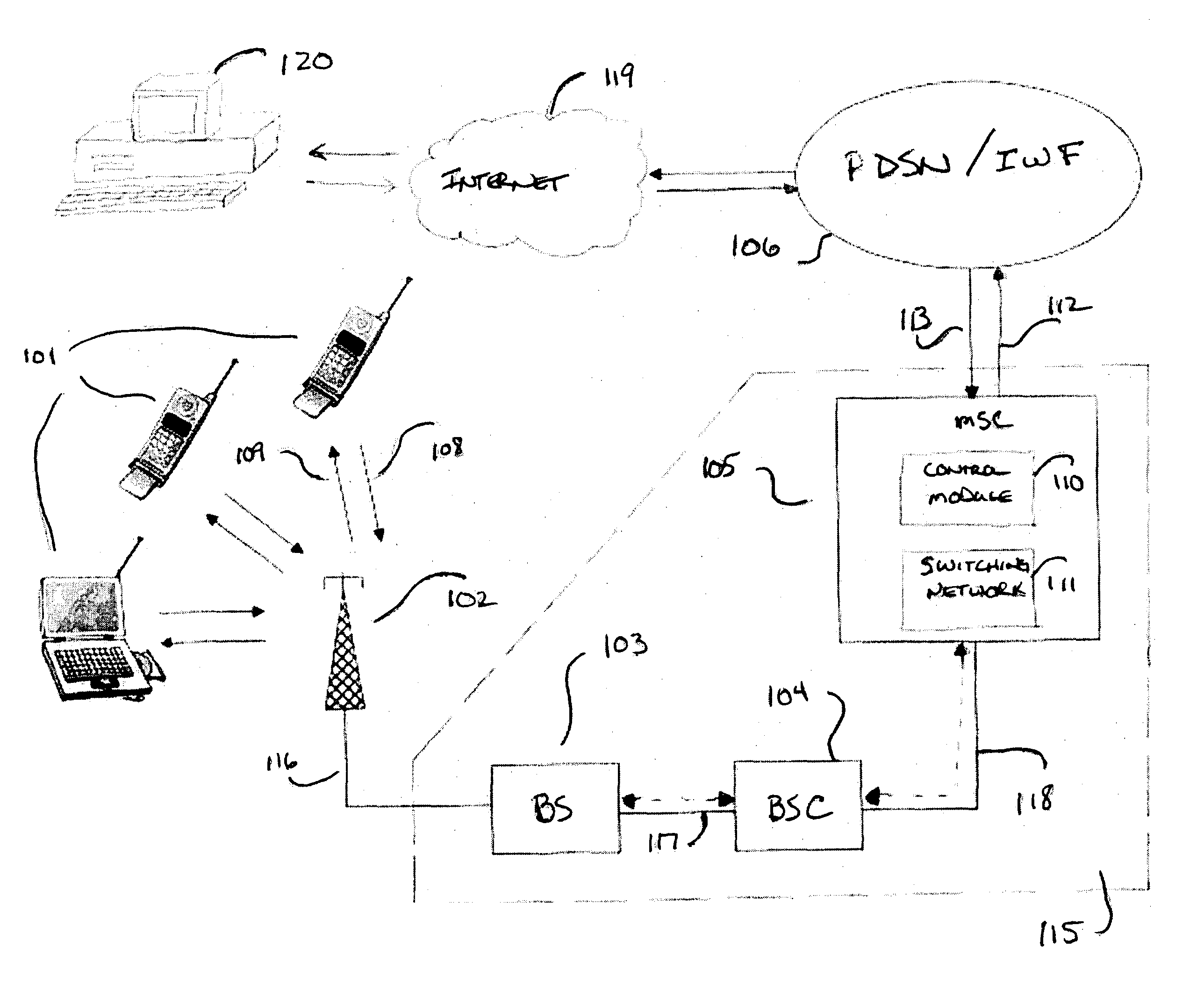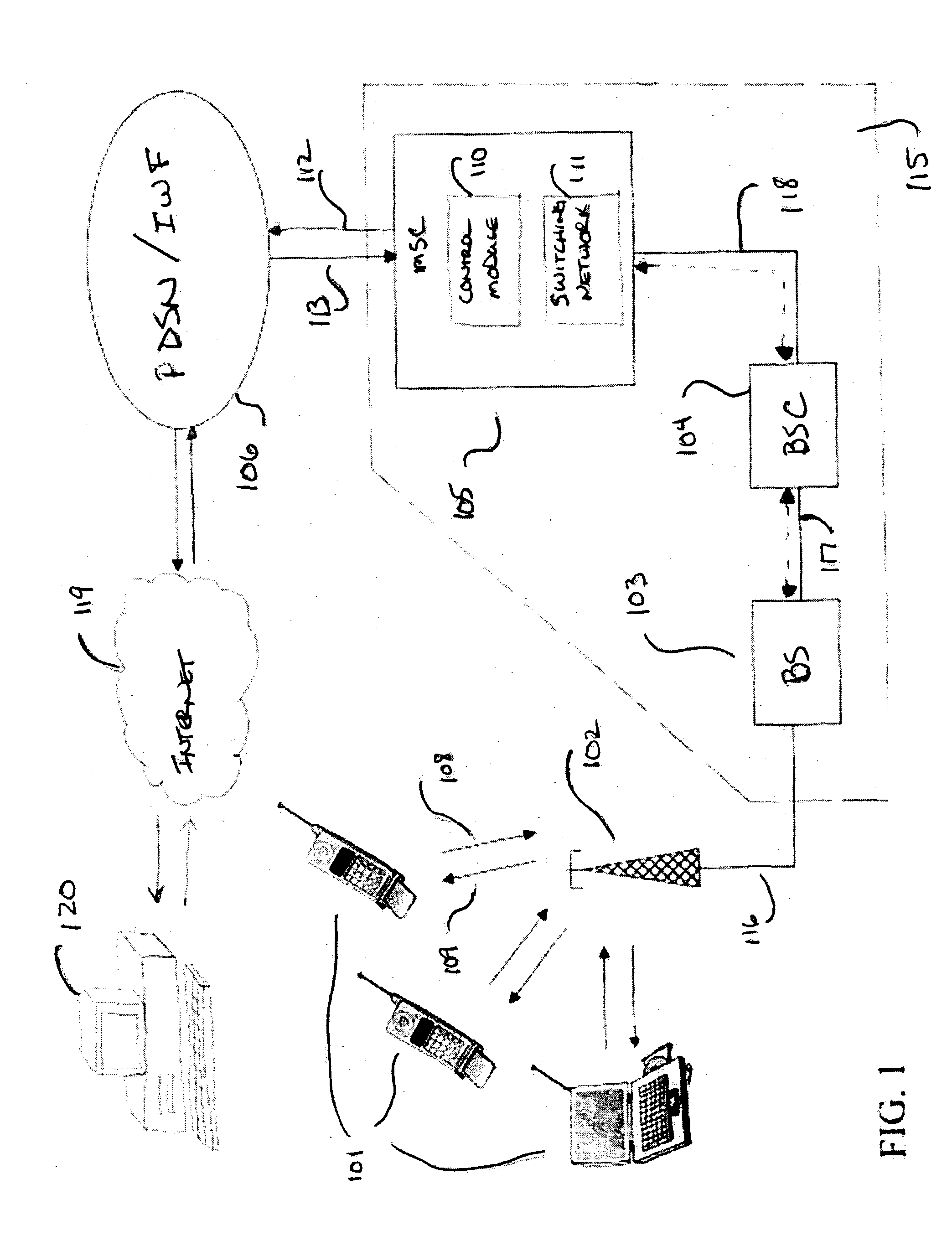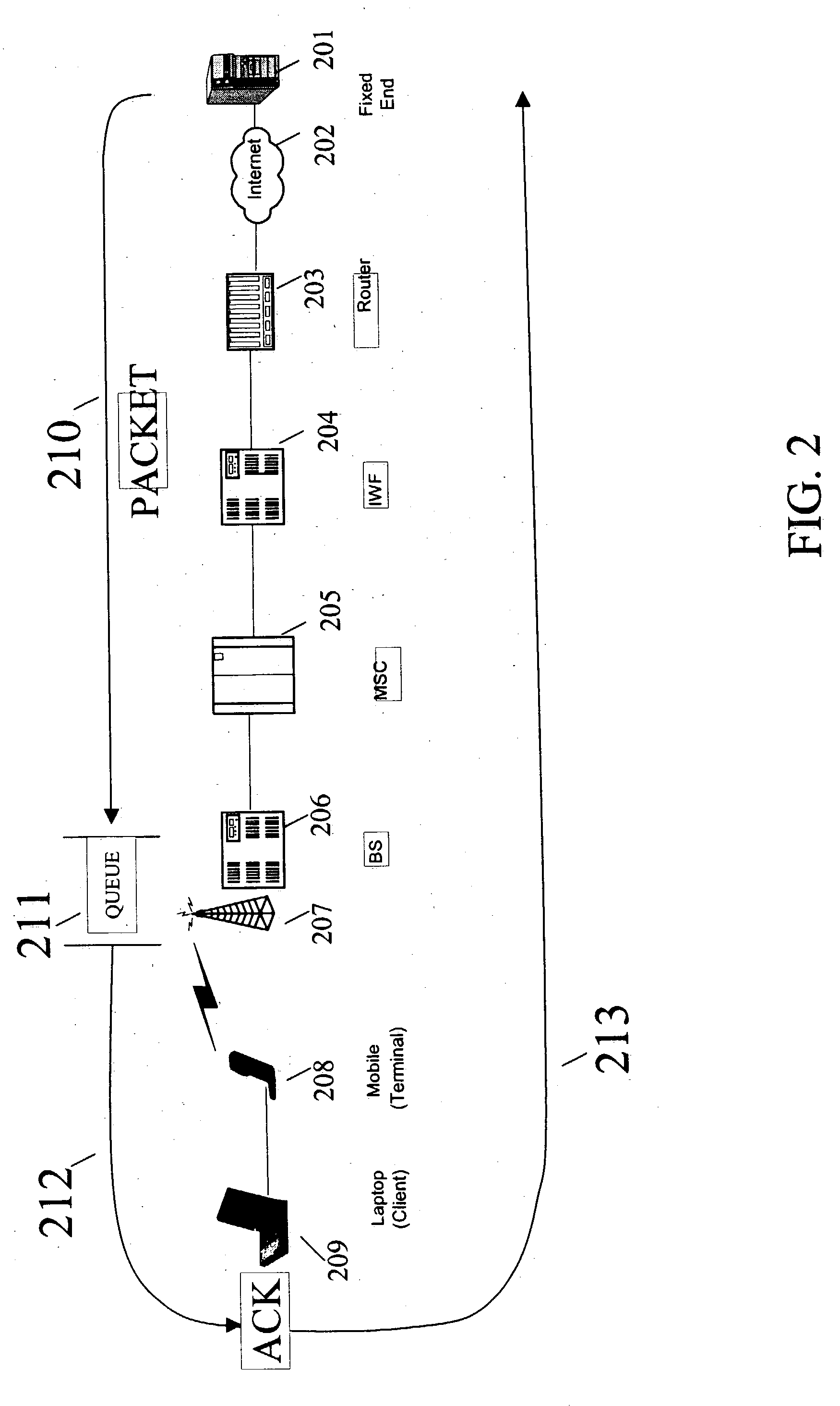Method and apparatus for scheduling transmissions in wireless data networks
a wireless data network and transmission method technology, applied in the field of wireless data transmission systems, can solve problems such as undesignated fairness or efficiency, packet loss or suspected packet loss, and achieve the effects of reducing users' transmission rates, preventing network overload, and efficient utilization of available bandwidth
- Summary
- Abstract
- Description
- Claims
- Application Information
AI Technical Summary
Benefits of technology
Problems solved by technology
Method used
Image
Examples
Embodiment Construction
FIG. 1 shows an embodiment of a wireless communication system, in which the present invention may be implemented in which, illustratively, data messages are transmitted to and from mobile terminals 101. Mobile terminals 101 communicate with other communication nodes (e.g., other mobile terminals or traditional telephones) by transmitting signals to antenna 102. Antenna 102 is used to both transmit data from network 115 to the mobile terminals 101 along air interface 109, as well as to receive data from mobile terminals 101 along air interface 108 and transmit it to network 115. Antenna 102 is connected to illustrative base station 103 via connection 116 and base station 103 is connected to an illustrative base station controller (BSC) 104 via connection 117. One skilled in the art will recognize that wireless systems may or may not use BSCs, such as illustrative BSC 104. BSC 104 is connected to mobile switching center (MSC) 105 via connection 118. MSC 105, which typically controls m...
PUM
 Login to View More
Login to View More Abstract
Description
Claims
Application Information
 Login to View More
Login to View More - R&D
- Intellectual Property
- Life Sciences
- Materials
- Tech Scout
- Unparalleled Data Quality
- Higher Quality Content
- 60% Fewer Hallucinations
Browse by: Latest US Patents, China's latest patents, Technical Efficacy Thesaurus, Application Domain, Technology Topic, Popular Technical Reports.
© 2025 PatSnap. All rights reserved.Legal|Privacy policy|Modern Slavery Act Transparency Statement|Sitemap|About US| Contact US: help@patsnap.com



